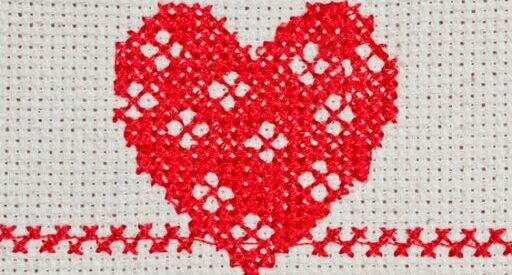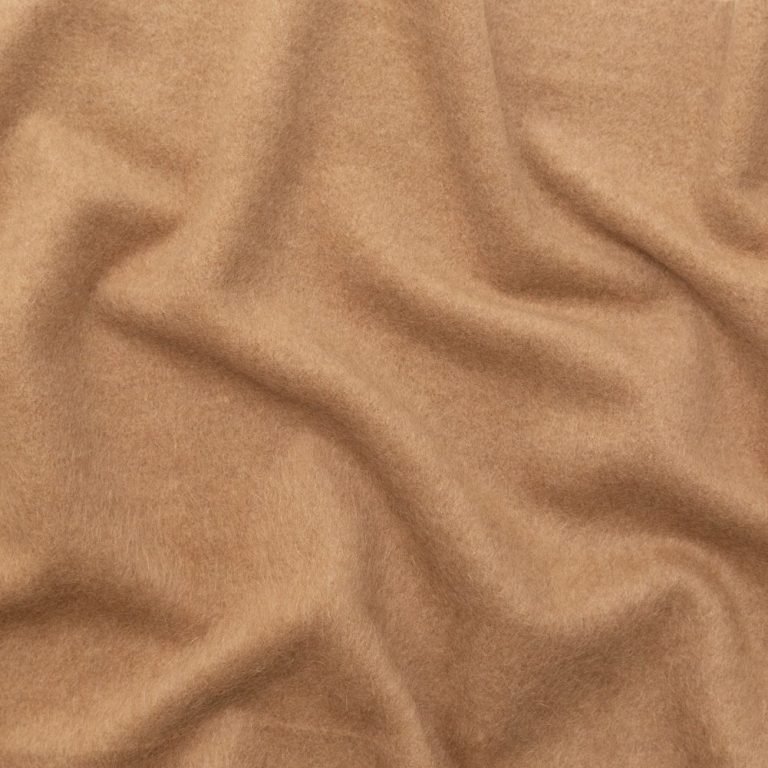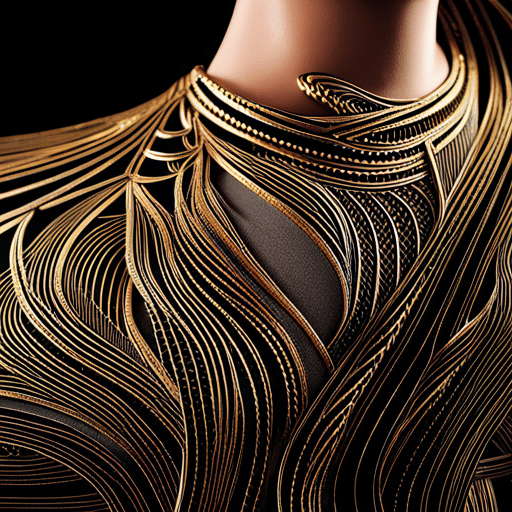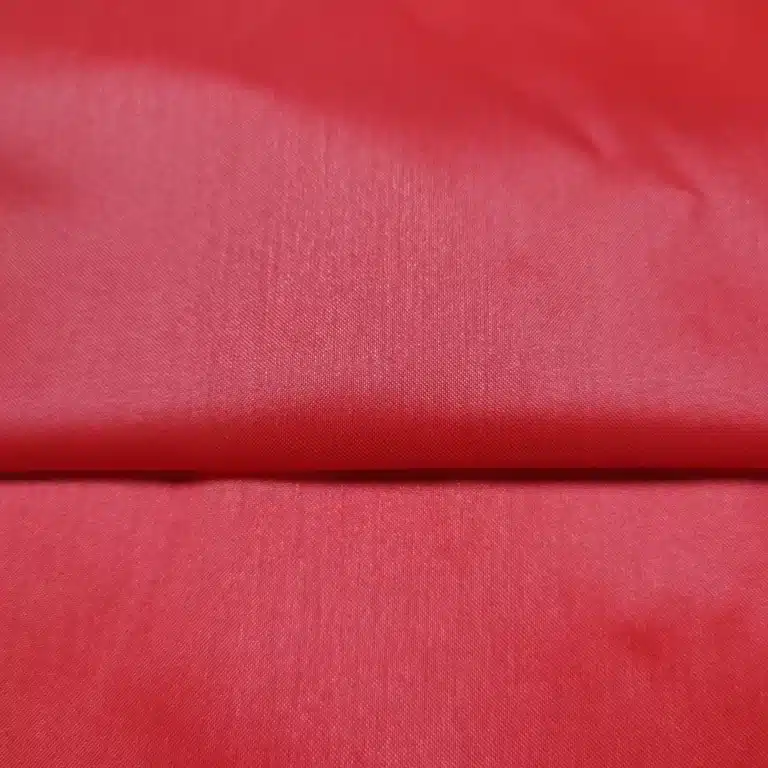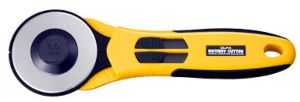Fabric Cutter Essentials: Tips to Cut Like a Pro
Embarking on a sewing or quilting project can be an exciting adventure, but it’s crucial to have the right tools on hand to ensure smooth and precise cutting. One such essential tool is a fabric cutter. These versatile gadgets are designed to make your projects easier and more efficient, allowing you to focus on your creativity instead of wrestling with scissors.
Fabric cutters come in various forms, including rotary cutters, manual die cutters, and electronic cutting machines. Rotary cutters, like the popular Mr. Pen Fabric Cutter, are well-suited for cutting through multiple layers of fabric quickly and accurately. Meanwhile, manual die cutters, such as AccuQuilt Go! and Sizzix Big Shot Plus, offer a more hands-on approach and can handle materials like leather and felt with ease.
If you’re looking to take your crafting projects to the next level, electronic cutting machines like the Cricut Maker or Silhouette Cameo 4 are the way to go. These high-tech machines provide unparalleled precision and allow for intricate designs and patterns, elevating your projects. No matter what type of fabric cutter suits your needs, having one in your arsenal will undoubtedly enhance your sewing and quilting experience.
Table of Contents
- 1 Types of Fabric Cutters
- 2 Selecting a Fabric Cutter
- 3 Popular Fabric Cutting Machines
- 4 Specialized Fabric Cutters
- 5 Fabric Cutter for Different Craft Types
- 6 Cutting Multiple Layers of Fabric
- 7 Footnotes
- 8 Expert Tips and Advice
- 9 Cutter Preferences and Knife Guards
- 10 Minimizing Waste and Shipping
- 11 Frequently Asked Questions
- 11.1 What’s the ideal tool for slicing through material?
- 11.2 How do I choose the right fabric cutter?
- 11.3 Can rotary cutters be used on all types of fabric?
- 11.4 What factors affect a fabric cutter’s salary?
- 11.5 How do I maintain my fabric cutting tools?
- 11.6 Are there any advanced fabric cutting techniques?
Types of Fabric Cutters
When it comes to fabric cutting, you have a variety of tools at your disposal. In this section, we will explore two main categories of fabric cutters: Manual Cutters and Digital Cutters.
Manual Cutters
Manual fabric cutters are the classic, tried-and-true option for cutting fabrics. They’re generally more affordable, and they offer a hands-on approach that many users appreciate. Some common manual fabric cutters include:
- Rotary cutters: Handheld tools with a circular blade attached to one side. They’re great for precision cutting on quilting and sewing projects. You can find rotary fabric cutters at stores like JOANN.
- Scissors: The traditional method for cutting fabric, available in various sizes and styles designed specifically for different types of materials.
- Shears: These are larger than scissors and typically have one blade with a flat edge for smoother cuts on delicate fabrics.
Remember, when using manual cutters, it’s essential to maintain the sharpness of your cutting tools for clean, precise cuts.
Digital Cutters
Digital fabric cutters are more advanced tools that offer precise, automated cutting capabilities. They can be a real game-changer for your projects, especially if you’re working with intricate patterns or high volumes of cutting. Some popular digital fabric cutters include:
- Cricut Maker: This versatile cutting machine can handle various materials, including fabric. It uses design software for creating precise cuts, making it ideal for complex patterns or shapes.
- Silhouette Cameo: Another top-notch electronic fabric cutting machine, the Silhouette Cameo offers cutting-edge technology that precisely cuts fabrics with ease.
- AccuQuilt Go!: An ultimate fabric cutter designed specifically for quilters, it allows for fast and accurate cutting of multiple layers of fabric at once.
While digital cutters typically come with a higher price tag, they can save you time and help you achieve more consistent results with your fabric cutting projects.
By understanding the differences between manual and digital fabric cutters, you can make an informed decision about which type is best suited for your needs and ensure success in your quilting, sewing, or fabric-related projects!
Selecting a Fabric Cutter
Budget Considerations
When choosing a fabric cutter, it’s essential to consider your budget. There are options available at different price points, like the AccuQuilt Go! Ultimate Fabric Cutter and the Cricut Maker or Cricut Maker 3. Consider the features and capabilities you need, and weigh them against the cost of the cutter.
Size and Weight
Think about the size and weight of the fabric cutter you are choosing. Depending on your workspace and how often you’ll be moving the cutter, you may want to opt for a more portable option. For example, the Big Electric Fabric Cutting Machine is heavier at 23-pounds but still portable.
Safety Features
Safety is paramount when working with fabric cutters. Look for features like safety guards, locks, and ergonomic handles that make it more comfortable and secure to use. For instance, rotary cutters like those from Fiskars come in different blade sizes and with safety features to help protect you during the cutting process.
Precision and Measuring
A perfect fabric cutter must be precise and easy to use for measuring. Some cutters have built-in measuring tools, while others may require additional accessories for accurate cutting. For intricate patterns, a smaller 28 mm blade, like the one found in some Fiskars rotary cutters, makes cutting easier. On the other hand, a larger 60 mm blade can power through thicker fabric, allowing for more versatility in your projects.
Ultimately, the best fabric cutter for you depends on your unique needs and preferences. Considering factors like budget, size and weight, safety features, and precision will help you make an informed decision that suits your projects. Keep these factors in mind as you explore various fabric cutting machines.
Popular Fabric Cutting Machines
In this section, we will discuss some popular fabric cutting machines that can help you with your quilting and sewing projects. Remember to consider factors such as your budget, frequency of use, and tech-savviness when choosing a machine.
AccuQuilt GO!
The AccuQuilt GO! is a great option for those who want a manual fabric cutter that is easy to use and portable. This machine comes with various cutting dies, allowing you to quickly and accurately cut different shapes and sizes of fabric. The AccuQuilt GO! is perfect for quilting enthusiasts, as it helps save time compared to using scissors or a rotary cutter.
Pros:
- Easy to use with minimal setup
- Portable and lightweight
- Variety of cutting dies available
Cons:
- Manual operation may be tiring for some users
- Requires purchasing additional dies for more shapes and sizes
Cricut Maker
The Cricut Maker is an electronic cutting machine that offers a range of cutting options and materials. It has a powerful rotary blade, making it suitable for cutting fabrics, leather, paper, and more. The Cricut Maker also features a user-friendly design and is compatible with Cricut’s Design Space software, which allows you to create and edit designs on your computer or mobile device.
Pros:
- Versatile and precise cutting options
- Suitable for various materials
- User-friendly with design software compatibility
Cons:
- Higher price point compared to manual cutters
- Some learning curve for beginners
Cameo Cutter
Cameo Cutter is another popular electronic fabric cutting machine that offers precise cuts and works with various materials. It provides a wide range of cutting and design options. However, it couldn’t be listed in the search results. But you can consider this as an additional option to explore further.
Remember that choosing the right fabric cutting machine for your needs will significantly impact the ease and enjoyment of your quilting and sewing projects. Consider your requirements and preferences, and select a machine that will help you create beautiful and intricate designs with confidence.
Specialized Fabric Cutters
Straight Knife Cutters
Straight knife cutters are a popular choice for cutting various types of fabric, including leather and upholstery materials. These fabric cutters consist of a straight, sharp blade that can efficiently cut through multiple layers of fabric with ease. You’ll find that using a straight knife cutter allows for precise cuts and accurate trimming, making your sewing and crafting projects much more enjoyable.
Make sure to maintain your straight knife cutter by keeping the blade sharp and clean. Regular maintenance helps ensure consistently smooth cuts and prolongs the life of your fabric cutter.
Electric Fabric Cutters
If you’re looking for something a bit more powerful, electric fabric cutters might be the perfect choice for you. These cutters are designed to handle larger volumes of fabric and make quick work of cutting tasks for projects involving leather, upholstery, and other thick materials.
Electric fabric cutters offer automated cutting, making it easier for you to achieve accurate and precise cuts without straining your hands or wrists. They come in a variety of styles and features, such as the Cricut Maker, which provides versatile cutting options for various types of fabric.
When selecting an electric fabric cutter, consider factors like ease of use, cutting capacity, and your specific project needs. By finding the right balance between performance and practicality, you can achieve professional results and make your sewing or crafting projects more enjoyable with an electric fabric cutter.
Fabric Cutter for Different Craft Types
Quilting and Piecing
When it comes to quilting and piecing, you need a fabric cutter that can handle intricate cuts and multiple layers of fabric with precision. Some of the best fabric cutting machines for quilting include the AccuQuilt Go! Fabric Cutter and the Sizzix Big Shot Pro Fabric Die Cutter. These machines make it easy to cut fabric in various shapes and sizes that are perfect for quilt blocks, helping you create beautiful patterns with ease. They can also be used in tandem with your sewing machine to streamline your quilting process.
Lace and Delicate Fabrics
Working with lace or delicate fabrics requires a different approach to cutting. Manual fabric cutters such as precision rotary cutters or fabric scissors can provide you with better control when cutting intricate designs. For example, the Mr. Pen Fabric Cutter is a rotary cutter with a 45mm blade, suitable for detailed cuts on lightweight fabrics like lace. When using the cutter, be gentle and use a cutting mat to protect your workspace, as well as the fabric itself.
Upholstery and Leather
For upholstery and leather projects, you’ll need a more robust cutting tool that can handle the thickness and density of these materials. Electric fabric cutters like the Cricut Maker are excellent choices for cutting through multiple layers of upholstery fabric without any issues. For thicker materials like leather, look into powerful manual fabric cutters such as the Fiskars Power Gear 2 or the Hercules 12″ Power Cutting Press. Remember to use appropriate blades or attachments when working with leather to ensure clean, precise cuts without damaging the material.
Cutting Multiple Layers of Fabric
Techniques
When cutting multiple layers of fabric, it’s important to have a strategy in place. First, make sure your fabric is properly prepared. Cut the fabric pieces down to a size that will fit on the cutting mat and press them to remove any wrinkles. On a protected surface, adhere two or three layers of light cotton fabric together using a temporary fabric adhesive, such as basting spray. Spray the entire first layer, ensuring it’s evenly coated and reaches all the way to the edges1.
Using a rotary cutter is an excellent technique for quickly and accurately cutting multiple layers of fabric at once, since it allows for clean, precise cuts while reducing hand strain2. Be sure to use a sharp blade and a steady hand for the best results.
Tools and Equipment
There are a variety of tools and equipment available for cutting multiple layers of fabric:
Rotary Cutter: Rotary cutters are perfect for cutting multiple layers of fabric, as they provide clean, quick, and accurate cuts2. To use one, place your fabric on the mat, line up your ruler, and make a smooth cut along the edge of the ruler. Be sure to use a self-healing cutting mat to prolong the life of your rotary cutter blades.
Fabric Scissors: Having a dedicated pair of fabric scissors in your sewing kit is essential for smooth, precise cuts. These scissors are designed specifically for cutting fabric, and can maintain their sharpness longer than regular scissors.
Cricut Maker: The Cricut Maker is an electronic cutting machine that allows you to cut multiple layers of fabric efficiently and accurately. It’s an excellent option for detailed cuts and intricate designs.
Ruler: A clear, acrylic ruler is essential for aligning your fabric and ensuring accurate cuts when using a rotary cutter or fabric scissors. Choose one with distinct markings, grid lines, and non-slip features for improved accuracy and safety.
By following these techniques and using the right tools and equipment, you can easily cut multiple layers of fabric for your sewing projects. Your fabric pieces will be clean, accurate, and ready for sewing in no time.
Footnotes
Expert Tips and Advice
Beginner Friendly
If you are new to using fabric cutters, start with the basics. It is crucial to have a clean, flat, and stable surface for cutting fabric accurately. Use a cutting mat with marked measurements, as it will provide a protective and accurate surface for your cuts. Always position your fabric on the die with the lengthwise grain running the length of the cutter, maintaining a consistent orientation to avoid distortion.
A rotary cutter is an excellent tool for beginners because it saves time and prevents hand fatigue. It offers quick, clean, and accurate cuts, allowing you to cut multiple layers of fabric simultaneously. Just remember always to use a sharp blade and practice safe cutting techniques.
Pros and Cons
Pros:
- Saves time and effort compared to using scissors
- Provides precise, clean, and accurate cuts
- Cuts multiple layers of fabric at once
- Reduces hand fatigue
Cons:
- Requires some practice to master
- Sharp blades can be dangerous if not used carefully
- May need frequent blade replacements for optimal cutting performance
Expert Recommendations
When cutting fabric for quilting, it’s essential to use a rotary cutter for increased accuracy. Line up the fabric with the markings on the cutting mat, then place a ruler on top of the fabric, ensuring the ruler aligns with the vertical and horizontal lines on the cutting mat. Rely on the ruler markings to measure the width of your cut.
Lastly, always prioritize safety when using fabric cutting tools. Maintain a steady hand and apply gentle pressure when cutting with a rotary cutter. Store the cutter with the blade retracted when not in use, and remember to keep the cutting area clean and organized, avoiding distractions during the process. Remember, the more practice you have, the more confident you will become in using fabric cutters for your sewing projects!
Cutter Preferences and Knife Guards
When it comes to fabric cutting, choosing the right cutter can be essential for a smooth and efficient experience. Your preference for a cutter may depend on factors like the type of fabric, the complexity of the project, and your own level of experience.
An important aspect to consider while selecting a cutter is the knife guard. Knife guards not only provide safety while cutting but can also enhance the accuracy and ease of use. In general, there are two major types of knife guards: manual and auto-adjustable. You should evaluate the pros and cons of each type before making your decision.
Manually adjustable knife guards offer better control over the cutting depth, allowing you to fine-tune the cuts based on your needs. This feature can be especially useful when working with delicate or layered fabrics. However, manual guards might require more attention to safety as adjustments need to be made by hand.
On the other hand, auto-adjustable knife guards offer ease of use as they automatically adjust to the thickness of the fabric. This can be particularly convenient if you work with various fabric thicknesses often. The CGOLDENWALL cutting machine is an example of a cutter featuring an auto-adjustable knife guard. While these guards contribute to a safer cutting experience, they may not provide the same level of precision as their manual counterparts.
Regardless of your preference, always prioritize safety when using a fabric cutter. Following the manufacturer’s guidelines for usage and maintenance is vital to avoid accidents or damage to your project. Additionally, being mindful of your surroundings while cutting and utilizing features like the knife guard can further minimize potential risks.
In summary, your cutter preference should be based on a combination of factors including the type of knife guard, fabric requirements, and your own comfort level. Taking these considerations into account will enable you to select a cutter that best suits your unique crafting needs.
Minimizing Waste and Shipping
Reducing wasted fabric is not only essential for the environment but also helps in cutting down production costs. As a fabric cutter, here are a few friendly tips for you to minimize fabric waste and optimize your shipping process.
When cutting fabric, consider using the Cut and Shift™ method. This technique allows you to maximize the usage of your fabric by cutting and shifting it to use up small spaces and prevent large scraps. This approach is not only efficient but also helps in reducing fabric waste on the cutting floor.
Plan Accurately – Proper planning is crucial when it comes to reducing fabric waste. Always make it a point to measure your fabric carefully, and ensure that you’re cutting the right amount needed for your project. Correct estimation of fabric consumption can help you avoid unnecessary waste and save on costs.
Automated Cutting – With difficult materials like Kevlar and other high-performance fabrics, automated cutting can be a more accurate and efficient process. This technology not only reduces the risk of waste during cutting but also ensures a consistent and high-quality finished product.
Optimize Shipping – Minimizing fabric waste goes hand-in-hand with optimizing your shipping process. By streamlining your packaging, you can reduce the size and weight of your shipments, making transportation more efficient and eco-friendly. Consider using reusable packing materials and plan your shipping routes effectively to cut down on overall shipping costs.
Incorporating these tips into your fabric cutting process can help you minimize waste and reduce shipping costs, ultimately contributing to a more sustainable and cost-effective approach to textile production.
Frequently Asked Questions
What’s the ideal tool for slicing through material?
There are various tools available for cutting fabric, but the ideal one depends on your specific needs and the type of material you’re working with. Some popular fabric cutting tools include rotary cutters, fabric cutting machines like Cricut Maker, and AccuQuilt machines. Consider the type of projects you plan on doing and the level of precision you need to determine the best tool for your needs.
How do I choose the right fabric cutter?
To choose the right fabric cutter, consider factors such as the types of materials you work with, your budget, and the level of precision required. Research different options, such as fabric cutting machines, and read reviews from other users to help you make an informed decision.
Can rotary cutters be used on all types of fabric?
Rotary cutters can be used on a wide range of fabrics, but the type of blade and the pressure you apply may vary depending on the material. For thicker fabrics, you may need a sharper blade or additional pressure. Always do a test cut to determine the proper technique for your specific fabric.
What factors affect a fabric cutter’s salary?
Factors that can affect a fabric cutter’s salary include location, experience, and the type of company they work for. Different industries may pay varying wages, and larger companies may offer more competitive salaries. Additionally, experienced fabric cutters may command higher pay due to their skill level and expertise.
How do I maintain my fabric cutting tools?
Proper maintenance of fabric cutting tools ensures their longevity and optimal performance. Some tips for maintaining your tools include cleaning blades regularly to remove lint and debris, sharpening or replacing dull blades, and storing tools in a safe and dry environment. If you’re using a cutting machine, follow the manufacturer’s guidelines for cleaning and maintenance to keep your machine in top condition.
Are there any advanced fabric cutting techniques?
There are various advanced fabric cutting techniques that can help you achieve more complex and intricate designs. These might include using a die cutter for consistent and precise shapes, using a laser cutter for intricate details, or working with specialized cutting tools for specific materials such as leather or fabric with stretch. As you gain experience and confidence in your fabric cutting skills, you can explore these advanced techniques to elevate your projects.
